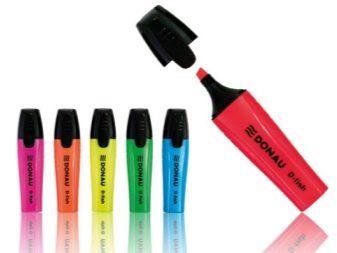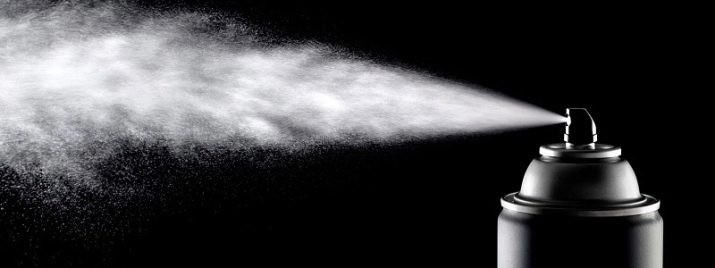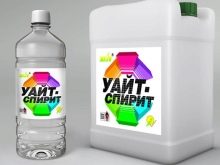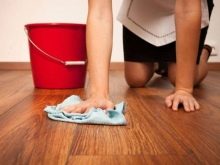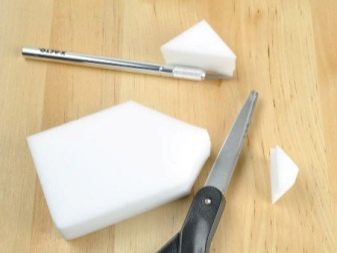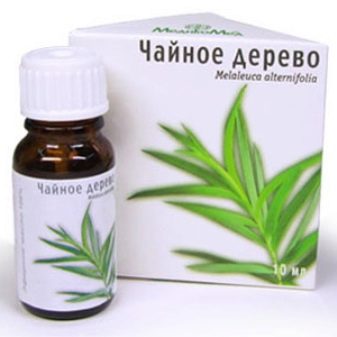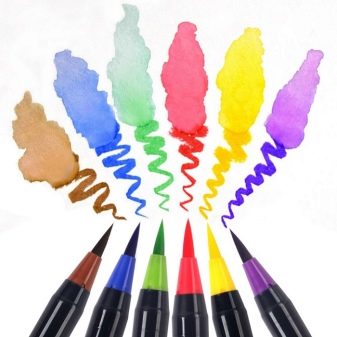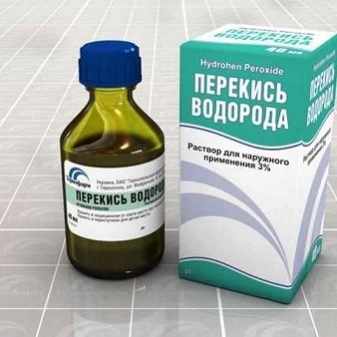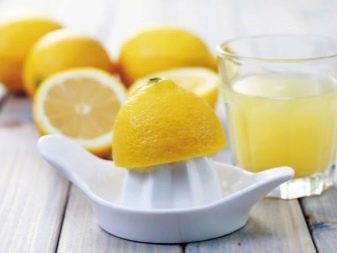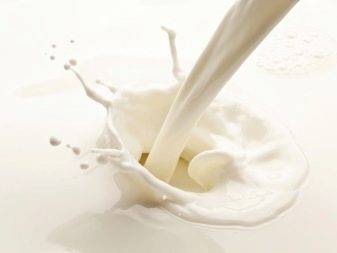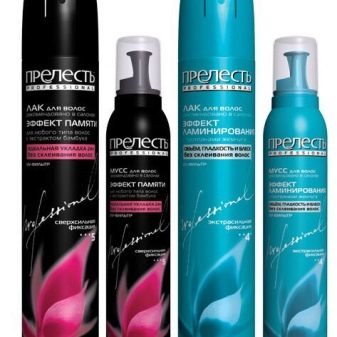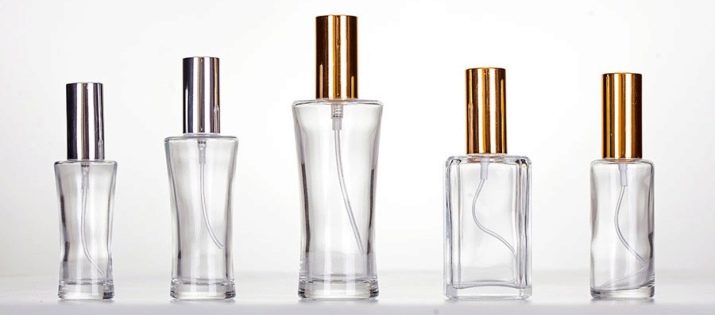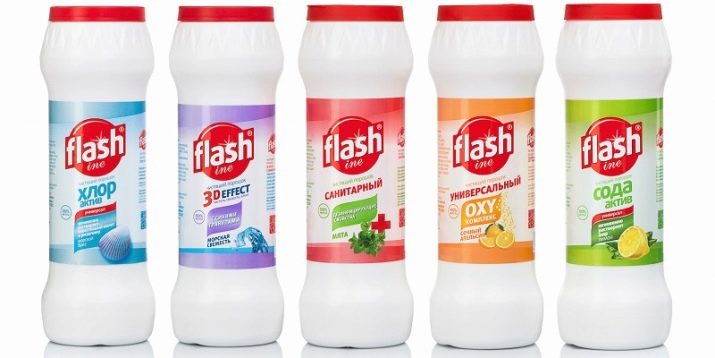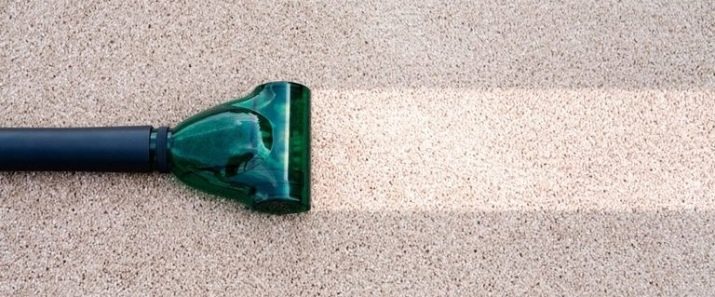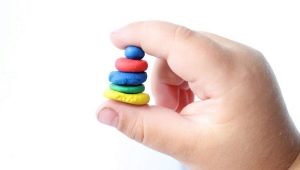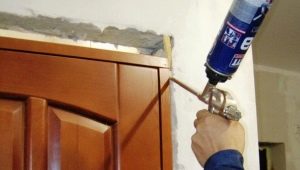How to remove traces of the marker from different surfaces: methods and recommendations
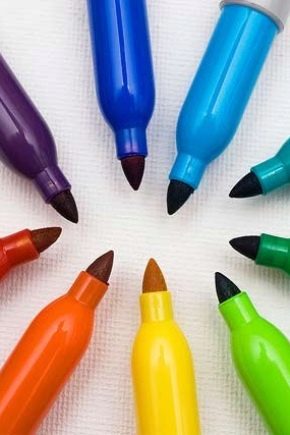
Now almost every home has markers. Childish pranks or forgetfulness of adults often lead to stains from their ink on various surfaces. Bring them out is quite difficult, but it is possible, for this there are several ways.
Types of products
Before you take up the removal of stains from the marker, you need to figure out exactly how it was made. There are markers and markers. Marker pen is a stationery item that is used to write exclusively on paper. Inside it is a reservoir, soaked with water-based paint, which flows to the tip of a porous material, and we write to them. If you write with a felt-tip pen on a metal or plastic, then its paint will spread and is easily erased.
The marker is designed for writing on any surface. This is a kind of felt-tip pen, the paint of which is made on a spirit basis, it is not washed off with water and does not spread. There is also a permanent marker, it is resistant to the effects of various environmental factors, due to which it remains on the surfaces for a long time. In addition, markers use paint on acrylic or oil base, which are used mainly by artists.
Knowing what you are dealing with, you can determine exactly what is best to cope with pollution.
Means used
Depending on the marker with which the item was damaged, it is worth choosing a cleaner. The most commonly used are:
- Ethanol. It is advisable to use pure alcohol, but if there is none, an alcoholic beverage with an alcohol content of more than 45 percent is suitable.
- Water or soap solution.
- Acetone or nail polish remover.
- Baking soda in powder form.
- Melamine sponge or “magic eraser”, which is sold in household departments and stores.
- Toothpaste white without additives.
- Means WD-40 in the form of an aerosol, which is sold in automotive stores.
- Economic marker for eliminating stains, produced by manufacturers of household chemicals.
- Office eraser.
- Cream to protect from the sun.
- Aerosols, such as deodorant or hair spray.
The appearance of a dirty surface also influences the choice of stain remover. Some materials may not withstand the effects of potent formulations or hard friction. Therefore, it is worth starting the cleaning with the simplest means.
Removal from non-porous hard coatings
Non-porous hard surfaces - tile, plastic, metal, kitchen worktops, glass, tile, linoleum, and more. These materials are sufficiently resistant to any effects, and to wipe the marker off of them will not be such a difficult task. You can use almost all of the above tools:
- Stripes from the marker from anywhere you can easily remove ordinary water, adding a little soap.
- With a marker, things are more complicated. If it needs to be washed from a plastic or kitchen countertop, alcohol is a great fit. Apply it on a cotton pad or cotton cloth and wipe the surface until the stain is removed.
- In the case of long-standing pollution, these same actions are performed using nail polish remover.
- Wash away the stains from the painted refrigerator, another piece of furniture made of metal or a car will help white spirit. After wetting them with a rag or sponge, wipe the pattern until it disappears, then, in order to avoid stains, use a dry cloth.
- Motorists are familiar with such an aerosol as WD-40.It is designed to remove stains not only from metal.
A marker that has fallen to the floor can ruin the floor covering. To clean the linoleum is better to choose a combination of baking soda and toothpaste. They need to mix one to one and process the desired area with a brush or sponge with abrasive. After 10-15 minutes, the paste is washed off. If necessary, repeat the procedure. You can remove stains from a tile by any method, since it is resistant to almost all of the above remedies.
If the child decided to “decorate” the TV screen, glass or mirror, then in order not to damage them, use soda with toothpaste or sunscreen. Apply to a contaminated place, wipe and rinse a little.
An even better way is to purchase a melamine sponge and simply wipe the pollution until it disappears.
Cleaning features
To remove marks from the marker on hard surfaces is not as difficult as in the case of soft and porous. Clothes, wood, upholstered furniture, wallpaper and carpets - all this is easy to spoil. Aggressive agents can remove the stain from the marker along with the paint on the materials may corrode or damage it. Therefore, for each type of coverage there are certain rules for cleaning.
Furniture
It is quite difficult to choose a tool for wooden furniture and boards, especially if the tree structure is preserved and minimally processed, since the paint penetrates deep inside from the marker. It can help tea tree oil. You can buy it in pharmacies or cosmetic stores. It is enough to drop a couple of drops on a cotton pad, smear the marks, and after a couple of minutes, rub it a lot. Remove oil residue with a dry cloth. Sunscreen is also suitable, but it should not be left for a long time, it can damage wooden products.
For lacquered doors or a table, the same method or application is suitable. alcohol, as well as more benign ways. For example, you can clean a contaminated place with a detergent liquid, a solution of ammonia and a teaspoon of soda, or with the same melamine sponge. Another tool can be a stationery eraser - just rub them with a strip from the marker.
Fabrics
Soiled things or upholstered furniture with fabric upholstery - those items for which the hostess is most scared.
Upholstered furniture is cleaned by simple actions:
- the stain is rubbed with a cloth dipped in hydrogen peroxide,
- then another cloth with alcohol or strong alcohol wipe and remove the stain,
- remove solutions with a damp cloth and impregnate excess moisture dry.
Clothes from the traces of the marker can be eliminated with lemon juice. A few drops are applied to the damaged area and left on for a while until the stain from the marker disappears. After the thing must be washed, as usual. It is easiest to save things of white color by bleaching, soaking them for a time sufficient to remove stains, but not more than indicated in the instructions for use, so as not to spoil the material.
Delicate fabrics will not carry every cleansing, even lemon juice is used for them, diluted in a 1: 1 ratio with water. Satin wardrobe items will free from stains a mixture of lemon juice and borax in a teaspoon and in the dining room - milk and vinegar 9%. It is applied for about 10-15 minutes, then wash and wash. Thick fabrics, such as terry towels, will endure alcohol and acetone.
Manufacturers of cleaning products in the fight against stains coming up with all new options. One of them is a marker or pencil to remove stains. They need to lubricate the fabric and leave for a specified time, then wash with a stain remover of the same or a different brand.
Wallpaper
The marker on the wallpaper seems an incomprehensible task for cleaning, but there is an option. It is recommended to apply hydrogen peroxide from the first-aid kit. Move from the periphery to the center without pressing so that the paint does not flow, apply a wadded disk to the wall and leave for a time after which the remnants are removed with a damp cloth.
If this method does not work, you can try to clean the walls. oxygen stain remover.
It is necessary to dilute it in water with a temperature above 40 degrees and wipe the wallpaper. After 15-20 minutes wash off. Alcohol marker can be scrubbed and lemon juice, mixed with alcohol, as well as white toothpaste, better with the effect of whitening. The oil marker is wiped off with oil. You can also iron the soiled place through the album list.
Carpet
The variety of carpet types, pile height and materials of manufacture can complicate the process of cleaning it. The first thing is to try alcohol or alcohol wipes. You need to press the fabric with it and let it soak. If after the first time at least some result is visible, then the procedure must be repeated until all the excess is eliminated.
Alcohol can be replaced hair spray. Spray onto the desired area and wipe with a dry cloth. In the case of a positive result, wash the carpet with water and dry with paper towels. White vinegar applied to the carpet can also dissolve the marker. In particularly advanced cases, these methods can be combined with each other.
Leather
It seems that removing any dirt from the skin is easier than ever, but the marker is not the case. Slight contamination on furniture or footwear is likely to be removed with an aqueous solution or acetone. In difficult cases, the main method for removal is hairspray. After spraying it must be rubbed to remove the stain and clean the place with a damp cloth. The second - alcohol or any eau de toilette, perfume, cologne. They should only be cleaned with a cotton swab or cloth. do not use sponges for washing dishes.
Other surfaces
Scrubbing a marker from rubber, for example, the soles of shoes, is quite difficult, it eats into a porous surface and is difficult to apply to cleaning agents. However, you can start with acetone or melamine sponge, carefully rub the surface and wash with water. Another option is aerosol deodorant, it is sprayed and rubbed, left for a while, then use a scouring powder or a simple soap solution.
Another surface can be considered the skin of the hands - it is more often the rest is stained with markers. And if the water-based marker can simply be washed with soap and water, then the alcohol marker is so easy not to remove.
Adults will help ordinary alcohol wipes. Children need a more benign option. You should take vegetable oil or petroleum jelly, apply it on your skin, rub and wait 5-7 minutes, rinse with water, repeat if necessary.
Tips
Highlight the following:
- Start cleaning with the least aggressive cleaning products.
- Read the instructions for the materials, if any, and select a cleaning agent based on this.
- Some tools can destroy the material of the product or contribute to the penetration of paint marker deeper, consider this when choosing a method of cleaning the surface.
- Cleaning powders, soda and toothpaste should be used on those surfaces that are difficult to scratch.
- Any means is necessary for testing on an invisible or hardly noticeable site.
- When cleaning carpets, do not rub the place of pollution, so as not to smear the paint over a large area.
- When cleaning plastic, it is worth being careful with solvents, together with a marker they can corrode the main material.
- If a marker gets on leather products, it is important to remove it as soon as possible, not allowing it to dry out.
- Protect your hands while working to avoid damaging your skin.
For information on how to remove stains from a marker from different surfaces, see the following video.

